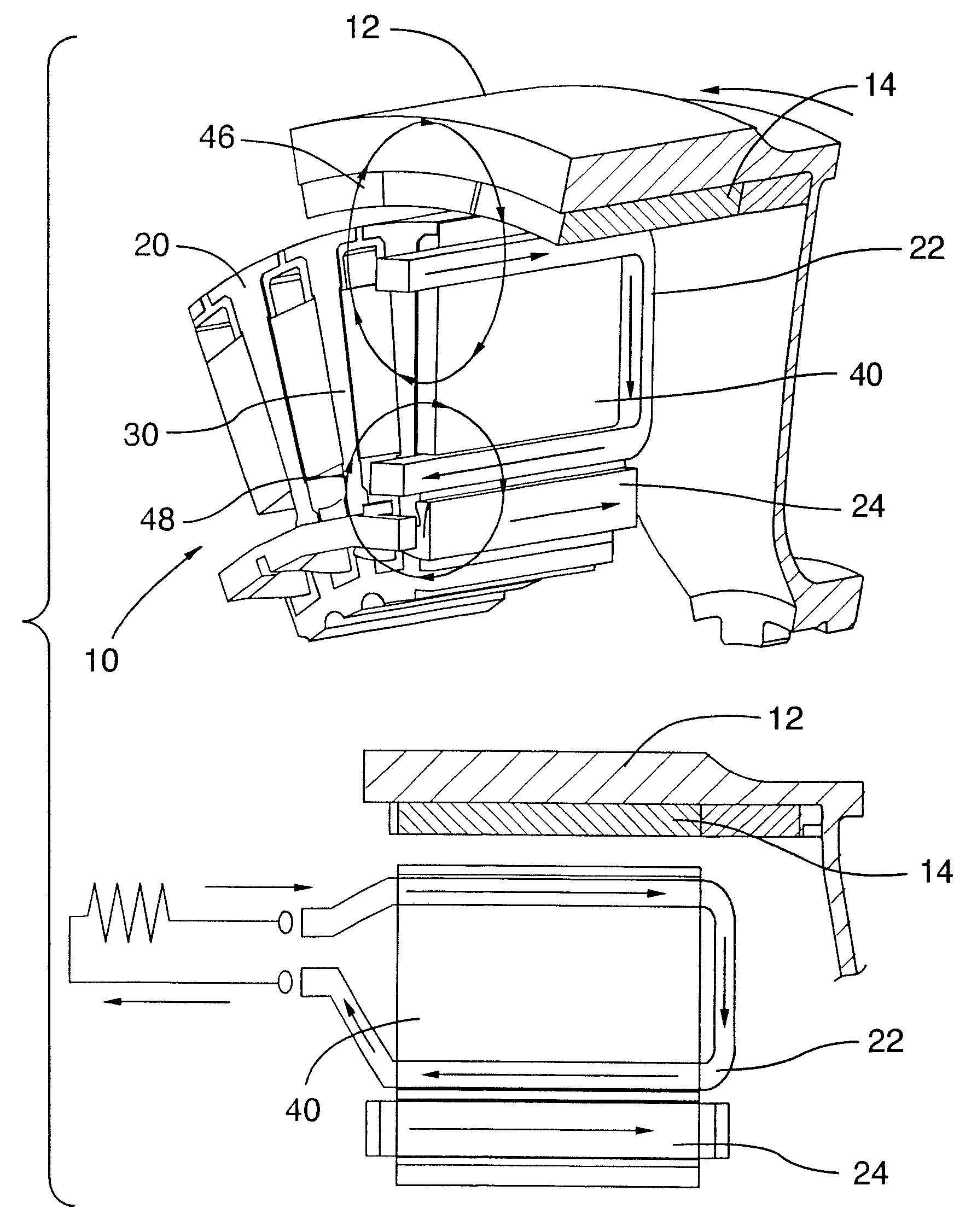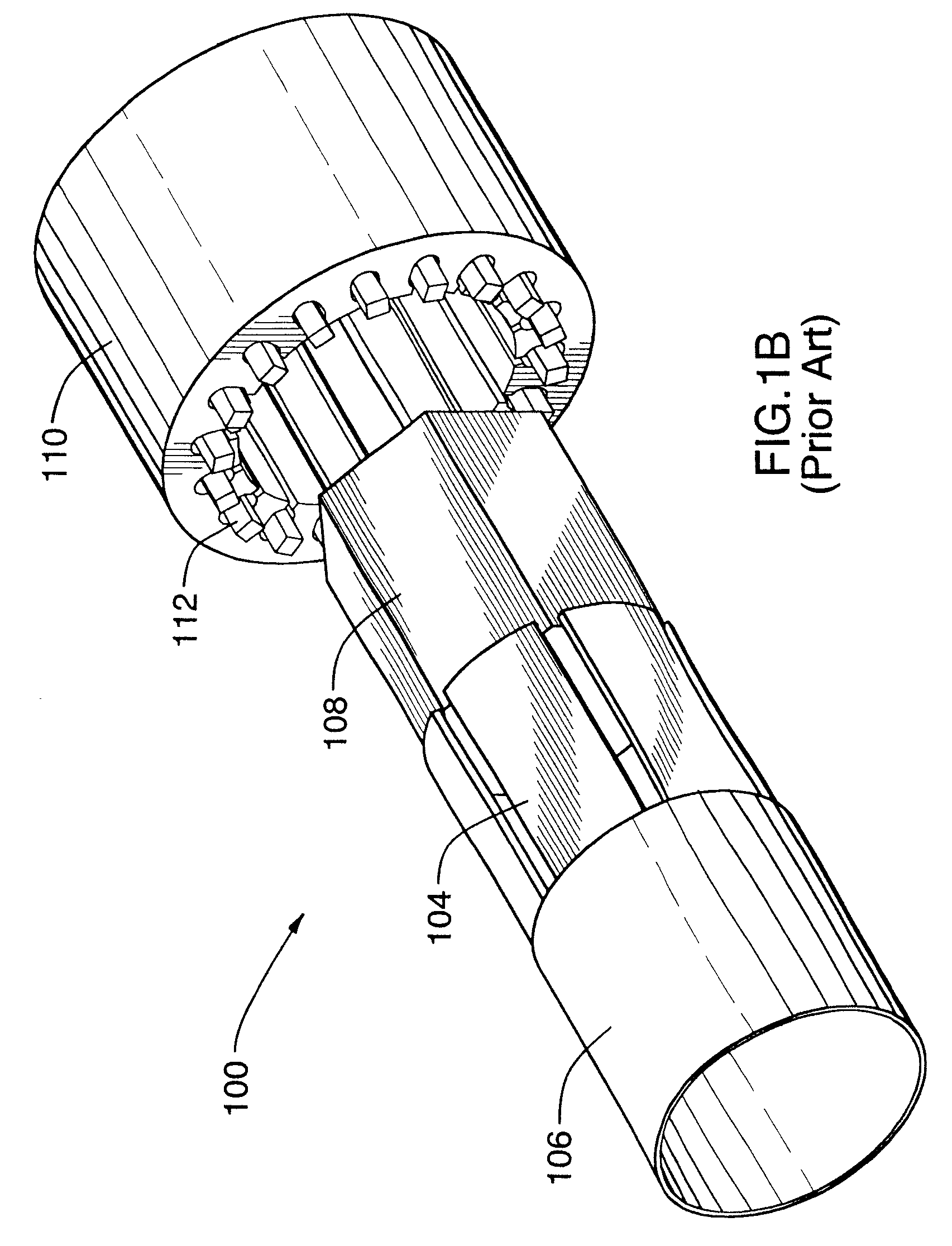Architecture for electric machine
a technology for electric machines and circuits, applied in the direction of machines/engines, electric generator control, dynamo-electric converter control, etc., can solve the problems of internal fault currents that can become extremely destructive to the machine, limited their usefulness, etc., and achieve the effect of reducing the stray inductance of the end turn
- Summary
- Abstract
- Description
- Claims
- Application Information
AI Technical Summary
Benefits of technology
Problems solved by technology
Method used
Image
Examples
Embodiment Construction
[0046]A permanent magnet (PM) machine according to the present invention is depicted in at 10 in FIGS. 4A to 4E. Referring first to FIGS. 4A and 4B, PM machine 10 has a rotor 12 which includes a plurality of permanent magnets 14 retained by a yoke 16 and retention sleeve portion 18. Machine 10 also has a stator 20 which includes at least a primary winding 22 and at least a secondary winding 24 (for clarity, only one of each such winding is shown), separated in this embodiment by a winding air gap 26 and disposed in radial slots 28 between a plurality of adjacent teeth 30 in a back iron 32. (For ease of illustration in FIG. 4B, the adjacent elements of secondary winding 24 are shown unconnected.) The winding air gap serves as insulation and may be replaced by other suitable insulation. A rotor air gap 34 separates rotor 12 and stator 20 in a typical fashion, and a stator tooth gap 36 separates adjacent teeth 30 at a rotor interface surface 38 of stator 20. Primary winding 22 and seco...
PUM
 Login to View More
Login to View More Abstract
Description
Claims
Application Information
 Login to View More
Login to View More - R&D
- Intellectual Property
- Life Sciences
- Materials
- Tech Scout
- Unparalleled Data Quality
- Higher Quality Content
- 60% Fewer Hallucinations
Browse by: Latest US Patents, China's latest patents, Technical Efficacy Thesaurus, Application Domain, Technology Topic, Popular Technical Reports.
© 2025 PatSnap. All rights reserved.Legal|Privacy policy|Modern Slavery Act Transparency Statement|Sitemap|About US| Contact US: help@patsnap.com



